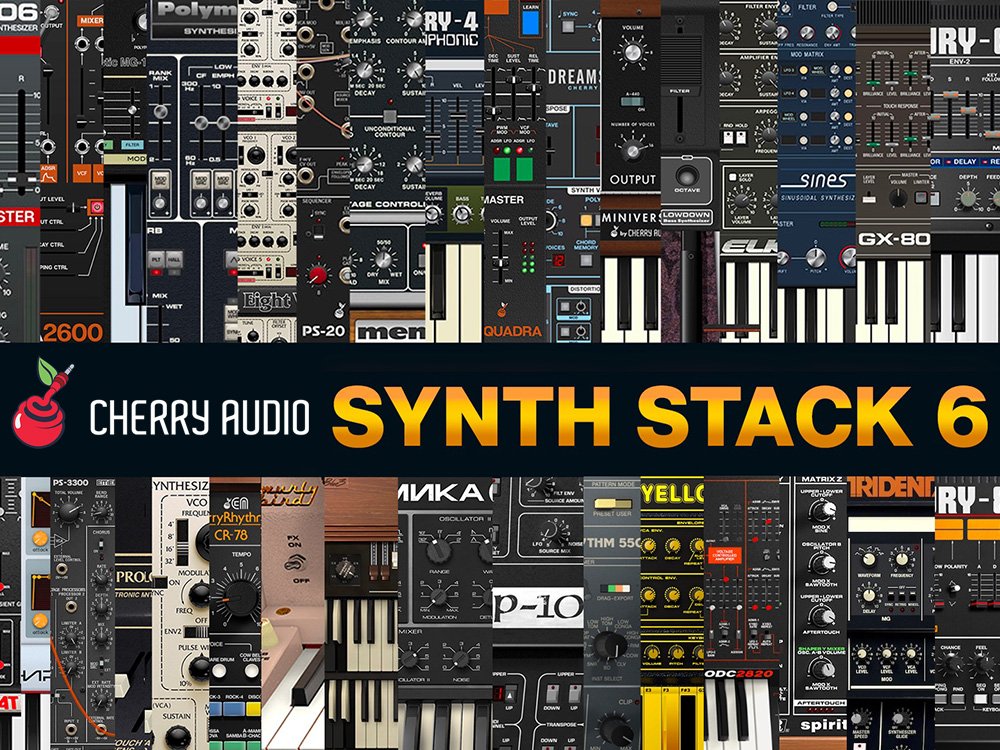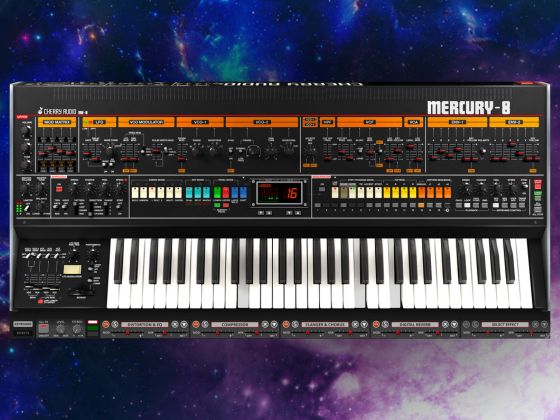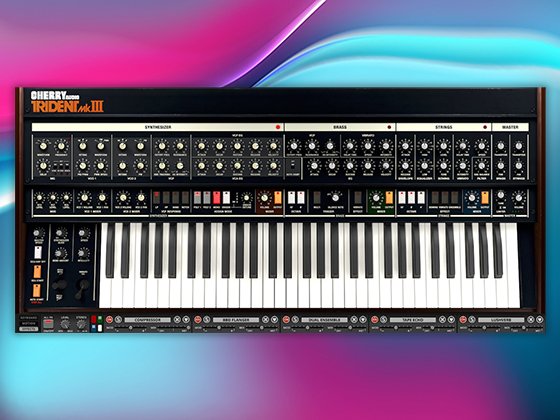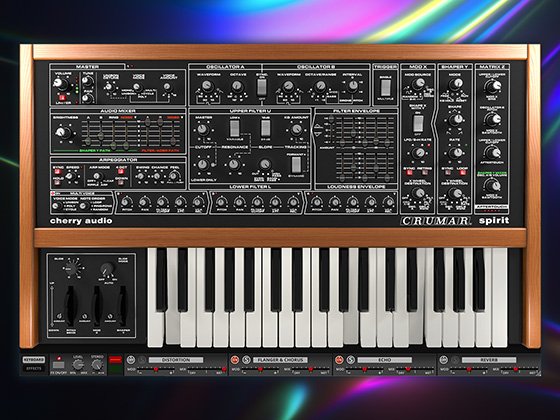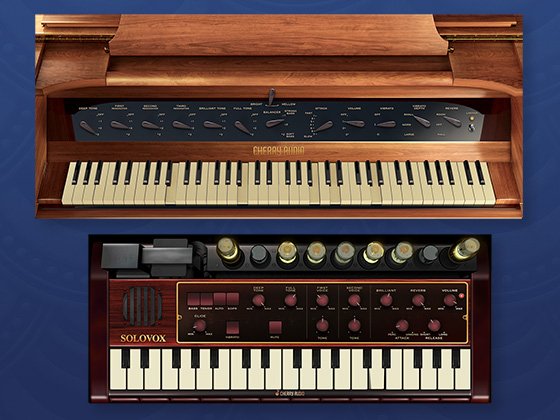Manufacturer: Request For Music
$12.00 $15.00
F_WATERZ — Water & Rain Sound Designer (User Guide)
F_WATERZ is a synthetic water generator for droplets, rain, stream and waterfall textures. It combines event-based droplets (short tonal pings with micro-modulation), a rain layer (noisier, denser events), and a continuous stream/turbulence bed (filtered noise with slow motion). A single Scene control morphs smoothly from isolated drops to gentle rain, heavy rain and stream—no mode-switch clicks.
Quick Start
- Set Scene low (~0.05) for cave-like droplets. Raise Density to taste (6–10).
- Shape timbre with Tone (center frequency) and Q. Higher Tone/Q = brighter, pingier drops.
- Use PitchAmt and PitchDec to control the upward pitch sweep per droplet (depth and speed).
- Increase NoiseMix as you move towards rain for a splashier, less tonal character.
- Place the scene with Depth (distance filtering and gain roll-off) and Width (stereo image).
- Add body with Turbulence (continuous moving noise) and subtle thickness with Stack (micro multi-tap).
- Balance layers via Level Drop, Level Rain, Level Stream, then set overall Master.
Signal Flow Overview
Droplets and rain are generated as many short-lived voices: each voice blends a sine “ping” with a band-pass-filtered noise burst, shaped by an attack/decay envelope, then distance-processed (high-cut, level, and stereo narrowing). In parallel, a stream/turbulence bed runs continuously (pink/white noise into moving filters). Outputs are summed, optionally micro-stacked (very short dual delays), soft-clipped, and sent to L/R outs.
Continuous Scene Morph
Scene (0→1) crossfades multiple behaviors in one gesture:
- 0.00 = Drops: low event density, higher Q, more tonal (lower NoiseMix), closer perspective.
- ~0.40 = Light Rain: increasing density, slightly lower Q, more noise character.
- ~0.70 = Heavy Rain: high density, lower Q, strong noise component, farther perspective.
- 1.00 = Stream/Waterfall: events are secondary to the continuous bed; Turbulence becomes prominent.
Controls
- **Scene**
- Smoothly morphs the whole system from droplets → rain → stream. Internally blends density, Q, noise bias, depth and stereo width.
- **Density**
- Average events per second (Poisson probability per sample). Higher values mean more droplets/rain hits.
- **Random**
- Humanizes pitch, pan, noise mix and envelope times per event. Keep moderate (0.3–0.7) for natural variation.
- **Tone** (Hz)
- Center pitch for droplet bands. Typical drops: 800–1500 Hz. Rain tends to work with slightly lower values.
- **Q (Resonance**)
- Band-pass sharpness for the event timbre. Higher Q = narrower, more tonal “ping”. Lower Q = broader, splashier.
- **PitchAmt**
- Depth of the upward pitch sweep per drop (up to ~1 octave by default). Real drops “rise” after impact—this captures that effect.
- **PitchDec (ms)**
- Time constant of the upward sweep. Lower values = faster rise. Typical 40–120 ms.
- **VibRate / VibDepth**
- Subtle vibrato layered on the droplet pitch for extra liveliness (2–12 Hz / 0–50 cents). Use sparingly.
- **NoiseMix**
- Blend between tonal sine body and band-pass noise. Low values = clean pings; high values = rainy, splashy events.
- **Depth**
- Global distance: increases high-frequency roll-off, reduces level, and narrows stereo image for “farther” perspective.
- **Width**
- Stereo width scaler. Wider for near, narrower for far or heavy rain beds.
- **Turbulence**
- Continuous moving noise bed (pink/white into slowly modulated filters). Great for streams, waterfalls, and windy rain.
- **Stack**
- Micro multi-tap (2 ultra-short delays) for cohesion and thickness. Subtle settings (~0.2–0.5) work best.
- **Level Drop**
- Controls the balance of tonal droplet events (single drips and sparse pings). Raise for cave-like drops, lower when focusing on rain or stream.
- **Level Rain**
- Controls the balance of the noisier, denser rain-like events. Increase for drizzle or heavy rain textures; reduce when you only want drops or stream.
- **Level Stream**
- Controls the continuous stream and turbulence layer. Essential for waterfalls, brooks, or ocean surf. Lower when focusing on discrete drops.
- **OUT**
- Global output gain. Includes a gentle soft clipper to tame peaks and glue layers together.
Suggested Starting Points
- Cave Drips: Scene 0.05, Density 6–10, Random 0.5, Tone 900–1400, Q 8–12, PitchAmt 0.7–1.0, PitchDec 60–120 ms, NoiseMix 0.25–0.4, Depth 0.3–0.5, Width 0.8–1.0, Turbulence 0.1–0.3, Stack 0.2–0.5. Levels: Drop ↑, Rain ↓, Stream ↓.
- Gentle Rain: Scene ~0.4, Density 15–20, Random 0.4–0.6, Tone 2.6–3.0 kHz, Q 5–6, PitchAmt 0.4–0.6, PitchDec 50–80 ms, NoiseMix 0.6–0.7, Depth 0.4–0.6. Balance Rain ↑, Stream ↔.
- Heavy Rain: Scene 0.7–0.85, Density 28–36, Random 0.6–0.8, Tone 1.8–2.2 kHz, Q 3.5–4.5, PitchAmt 0.2–0.4, PitchDec 40–60 ms, NoiseMix 0.8–0.9, Depth 0.6–0.8, Width 0.2–0.4, Turbulence 0.5–0.8. Rain ↑, Stream ↑.
- Stream / Waterfall: Scene 0.95–1.00, Density 8–20 (events secondary), NoiseMix 0.4–0.8, Turbulence 0.6–1.0, Depth 0.7–1.0, Width 0.2–0.4. Stream ↑, others ↓.
CV & Modulation Ideas
- Density CV: Patch slow random or weather-like LFO to evolve scene activity over time.
- Random CV: Animate texture subtlety from static → lively during transitions.
- Stream Mod CV: Move stream cutoff for “gusts” or flow surges (envelope follower from external source also works).
- External Reverb/IR: Short rooms for caves, long plates/halls for outdoor rain. Consider more send for Stream than for Drops.
Production Tips
- EQ Tilt: A gentle high-shelf can push from cave to outdoor drizzle; a low-shelf can add body to waterfalls.
- Layering: Duplicate F_WATERZ on a second lane: one set “near drips”, another “far stream” for cinematic depth.
- Automation: Automate Scene and Density to tell a weather story: dry → drizzle → downpour → runoff.
- Keep It Subtle: Small changes in NoiseMix, Depth, and Stack often read as more realistic than big jumps.
Troubleshooting
- Too tonal / bell-like: Lower Q, raise NoiseMix slightly, shorten PitchDec, or lower Tone.
- Too hissy / shapeless: Increase Q, reduce NoiseMix, reduce Turbulence, or raise Tone.
- Not enough distance: Increase Depth and reduce Width; lower Level Drop vs. Stream.
- Clicks/peaks: Reduce Master slightly, reduce Stack, or lower Density.
- CPU spikes: Lower Density, reduce Stack, shorten PitchDec (voices die faster), or reduce Level Rain.
Credits & Intent
F_WATERZ is designed to cover droplets → rain → stream in one performance-friendly module. The continuous Scene control is the heart of the workflow: start with drops, turn towards rain, then into streams without switching modes or changing patch cables.
